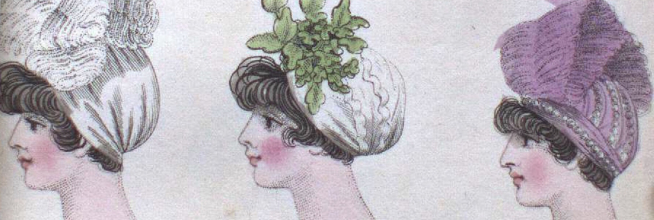Staying in Style: Books on Fashion

October saw another Fashion Week in Toronto come and go - one of many events that mark the seasons of the fashion calendar.


Our interest in fashion is not new: clothing is a way to demonstrate belonging, status, wealth or purpose, as well as to express individuality. The oldest book in the collection of the ROM Library is a book about fashion. The Little Book on Clothing, published in 1541, is a diminutive book in Latin equipped with a transation into French to ensure the accessibility of the text for a greater number of readers.
The Little Book on Clothing is an early example of a genre of books dedicated to describing, explaining, and sometimes illustrating past and current domestic and foreign fashions. One of the most enduring of these costume books is Cesare Vecellio’s Of Costumes, Ancient and Modern, of Different Parts of the World.

 Initially published in the lat 16th century, the book remains in print to this day. This edition, from 1859, shows two fashionable young people: a Venetian lady of the 16th century wearing the distinctive wide brimmed hat used when bleaching hair to a fashionable blonde, and a young man proclaiming his membership in the prestigious ‘Compagnia della Calza” or ‘Socks Club’ with his striped stockings.
Initially published in the lat 16th century, the book remains in print to this day. This edition, from 1859, shows two fashionable young people: a Venetian lady of the 16th century wearing the distinctive wide brimmed hat used when bleaching hair to a fashionable blonde, and a young man proclaiming his membership in the prestigious ‘Compagnia della Calza” or ‘Socks Club’ with his striped stockings.
Publications that we might recognize as the ancestors of today’s fashion magazine were very popular in the early 19th century. Then, as now, fashions often reflected current events. With the popularity of the Grand Tour, the rediscovery of the ancient world at Pompeii, and Napoleon’s Egyptian campaigns, the ‘Antique’ and the ‘Oriental’ became popular modes of dress. The dresses below are described with terms such as à la Mameluc, Egyptian brown, the ‘Oriental Style’, and embellished with details such as a turban à la Niobé, and Roman ‘vestal veil’.



Such influences are also seen in the names for styles of men’s neckcloths, such as the ‘Corsican’, ‘Eastern’, ‘Indian’ and even ‘Yankee’.

Fashionable ladies in the young countries of North America were keen to keep abreast of developments in centres such as London and Paris, as well as those nearer to home. Buying an imported dress made in Europe was beyond the means of many, but periodicals such as Peterson’s Magazine presented women not only with illustrations, but also with schematic drawings and even patterns, so that an enterprising reader could make her own.

Budget was also a concern for men who wished to cut a dash: a young officer might have consulted books like The Whole Art of Dress! which boldly claims to outfit a man of elegance and fashion with an ‘enormous savings of Thirty percent!!!’.

Clothes adapt to reflect our lifestyles and activities. In the early 20th century there was a new interest in sports among women as well as men, with golf and swimming becoming particularly popular. New clothes were required to accommodate these pursuits, and sportswear was born.


And finally, accessories. Until quite recently, items such as hats, bonnets, neckties, and gloves were considered essential to a complete outfit, and could not be left behind. These accessories were often tailored to suit the task at hand, such as the mens riding gloves, or womens evening gloves shown here.  Shoes too reflected function as well as fashion, from the daring rainbow high heel of the early 20th century, to the raised platform slipper from 1786, designed to keep long hems and elegant footwear out of muddy streets. Another example of a platform shoe can be seen at the feet of the Ventian lady above.
Shoes too reflected function as well as fashion, from the daring rainbow high heel of the early 20th century, to the raised platform slipper from 1786, designed to keep long hems and elegant footwear out of muddy streets. Another example of a platform shoe can be seen at the feet of the Ventian lady above.

